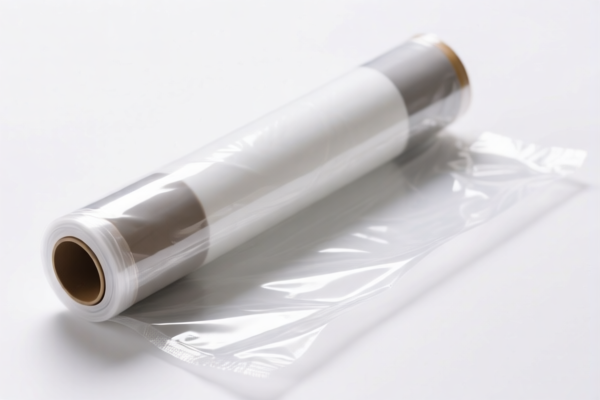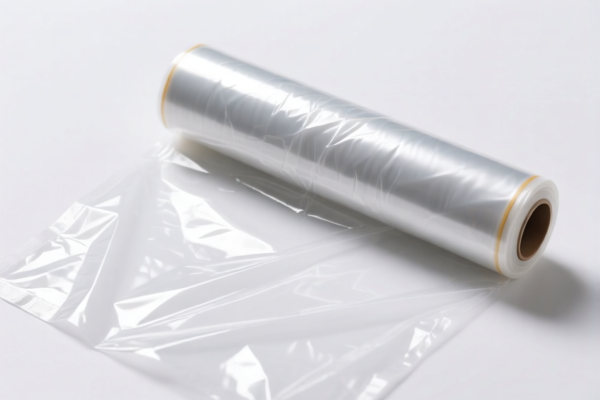| HS Code | Official Doc | Tariff Rate | Origin | Destination | Effective Date |
|---|---|---|---|---|---|
| 3923102000 | Doc | 55.0% | CN | US | 2025-05-12 |
| 3923109000 | Doc | 58.0% | CN | US | 2025-05-12 |
| 3919102055 | Doc | 60.8% | CN | US | 2025-05-12 |
| 3919905060 | Doc | 60.8% | CN | US | 2025-05-12 |
| 4001290000 | Doc | 55.0% | CN | US | 2025-05-12 |
| 4001290000 | Doc | 55.0% | CN | US | 2025-05-12 |
| 4005100000 | Doc | 55.0% | CN | US | 2025-05-12 |
| 4005910000 | Doc | 55.0% | CN | US | 2025-05-12 |




Plastic Packaging Film
Plastic packaging film is a thin, flexible material used to encase, protect, and contain goods. It is ubiquitous in both industrial and consumer applications due to its versatility, cost-effectiveness, and protective properties.
Material
A wide variety of polymers are employed in the production of plastic packaging films, each offering distinct characteristics. Common types include:
- Polyethylene (PE): The most widely used plastic film. Available in Low-Density Polyethylene (LDPE), Linear Low-Density Polyethylene (LLDPE), and High-Density Polyethylene (HDPE), each with varying degrees of strength, flexibility, and barrier properties.
- Polypropylene (PP): Known for its higher melting point and good resistance to chemicals, making it suitable for hot-fill applications and retort packaging. Can be Biaxially Oriented Polypropylene (BOPP) for increased strength and clarity.
- Polyethylene Terephthalate (PET): Offers excellent clarity, strength, and gas barrier properties. Often used for bottles, food containers, and blister packs.
- Polyvinyl Chloride (PVC): Rigid or flexible, with good barrier properties and chemical resistance. Use is declining due to environmental concerns.
- Polyamide (PA) / Nylon: Provides high strength, puncture resistance, and gas barrier properties. Often used in vacuum packaging and modified atmosphere packaging.
- Ethylene Vinyl Acetate (EVA): Offers flexibility, softness, and good sealing properties.
- Cast Polypropylene (CPP): Offers excellent clarity, good sealing properties, and is often used for food packaging.
Multilayer films, combining two or more polymers, are frequently used to achieve specific performance characteristics.
Purpose
The primary purposes of plastic packaging film are:
- Containment: Holding products securely.
- Protection: Shielding goods from damage, contamination, moisture, oxygen, and other environmental factors.
- Preservation: Extending shelf life by controlling gas exchange and preventing spoilage.
- Marketing: Providing a surface for branding, product information, and visual appeal.
Function
Key functional properties of plastic packaging films include:
- Barrier Properties: Resistance to gases (oxygen, carbon dioxide, nitrogen), moisture, light, and odors.
- Mechanical Strength: Tensile strength, tear resistance, puncture resistance, and impact resistance.
- Sealability: Ability to form strong, airtight seals.
- Clarity/Opacity: Transparency for product visibility or opacity for light protection.
- Printability: Ability to accept printing for branding and information.
- Heat Shrinkability: Ability to conform tightly to the product upon heating.
Usage Scenarios
Plastic packaging film is used across a vast range of industries:
- Food and Beverage: Wrapping fresh produce, meat, snacks, confectionery, beverages, and processed foods.
- Pharmaceuticals: Blister packs, pouches, and sterile packaging.
- Industrial: Pallet wrapping, protecting goods during transit, and containing components.
- Agriculture: Silage film, greenhouse coverings, and mulch film.
- Consumer Goods: Packaging for household products, personal care items, and electronics.
- Medical: Packaging for sterile devices and equipment.
Common Types (by application)
- Stretch Film: Used for pallet wrapping and securing loads. Typically LDPE or LLDPE.
- Shrink Film: Used to tightly wrap products, often for tamper evidence and protection. Typically PVC or POF (Polyolefin).
- Food Wrap: Used for covering food items, typically LDPE or PVC.
- Laminating Film: Used to protect and enhance printed materials. PET or BOPP are common.
- Form-Fill-Seal (FFS) Film: Used in automated packaging machines to create pouches and bags. Various polymers are used depending on the application.
- Co-extruded Film: Multi-layer films designed for specific barrier and performance requirements.
Plastic packaging film can be categorized based on its specific use and composition. The following HS codes are relevant based on the provided information:
- 3923102000: This HS code covers articles for the conveyance or packing of goods, of plastics; stoppers, lids, caps and other closures, of plastics: Boxes, cases, crates and similar articles: Specially shaped or fitted for the conveyance or packing of semiconductor wafers, masks or reticles of subheadings 3923.10 or 8486.90. This would apply if the plastic film is specifically designed for packaging these semiconductor components. The tax rate details are: Basic tariff: 0.0%, Additional tariff: 25.0%, Post-April 2, 2025, additional tariff: 30%, Total tariff: 55.0%.
- 3923109000: This HS code covers articles for the conveyance or packing of goods, of plastics; stoppers, lids, caps and other closures, of plastics: Boxes, cases, crates and similar articles: Other. This applies to plastic packaging film not specifically designed for semiconductor components. The tax rate details are: Basic tariff: 3.0%, Additional tariff: 25.0%, Post-April 2, 2025, additional tariff: 30%, Total tariff: 58.0%.
- 3919102055: This HS code covers self-adhesive plates, sheets, film, foil, tape, strip and other flat shapes, of plastics, whether or not in rolls: In rolls of a width not exceeding 20 cm: Other Other: Other. This applies if the plastic film is self-adhesive and supplied in rolls with a width of 20 cm or less. The tax rate details are: Basic tariff: 5.8%, Additional tariff: 25.0%, Post-April 2, 2025, additional tariff: 30%, Total tariff: 60.8%.
- 3919905060: This HS code covers self-adhesive plates, sheets, film, foil, tape, strip and other flat shapes, of plastics, whether or not in rolls: Other: Other Other. This applies to self-adhesive plastic film not meeting the width criteria of 3919102055. The tax rate details are: Basic tariff: 5.8%, Additional tariff: 25.0%, Post-April 2, 2025, additional tariff: 30%, Total tariff: 60.8%.
Chapter 39 relates to plastics and articles thereof. Chapter 40 relates to rubber and articles thereof.
Heading 3923.10 specifically covers articles for the conveyance or packing of goods, of plastics. Heading 3919.10 covers self-adhesive plates, sheets, film, foil, tape, strip and other flat shapes, of plastics.
It is important to determine whether the plastic film is self-adhesive and its intended use (general packaging vs. specific applications like semiconductor components) to select the correct HS code.
Customer Reviews
No reviews yet.